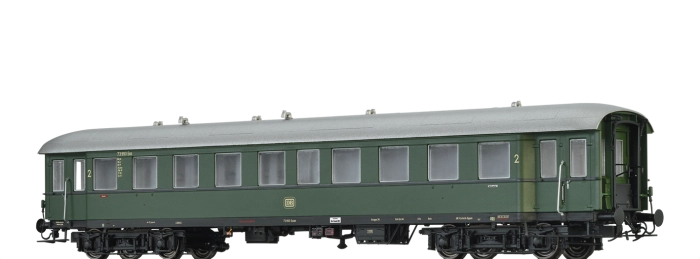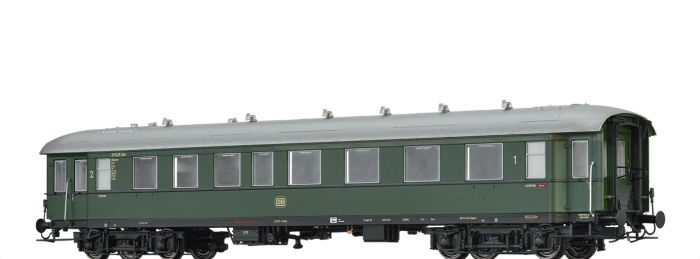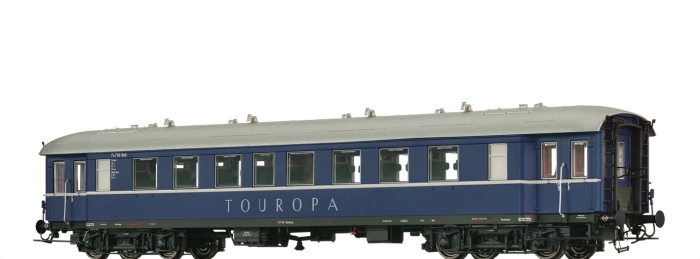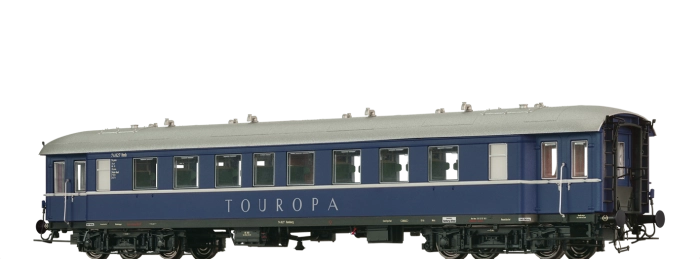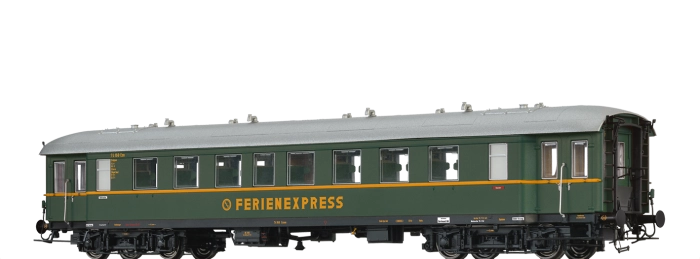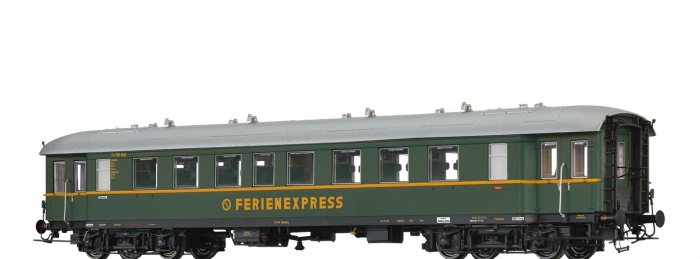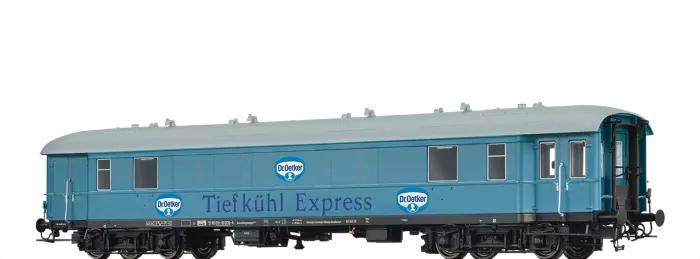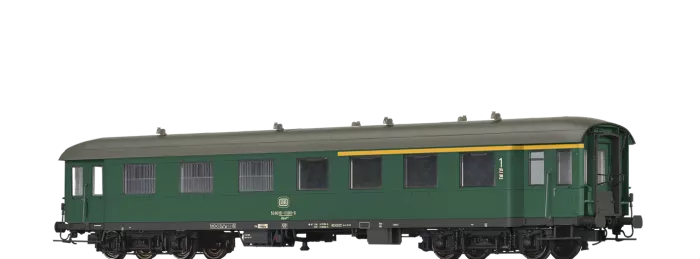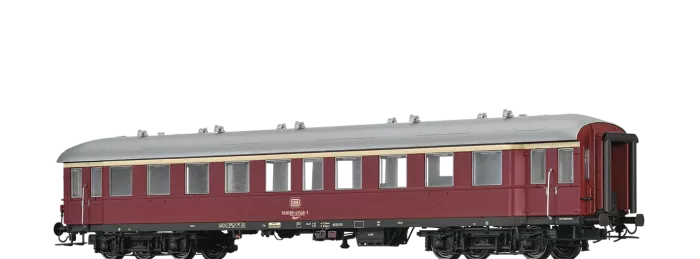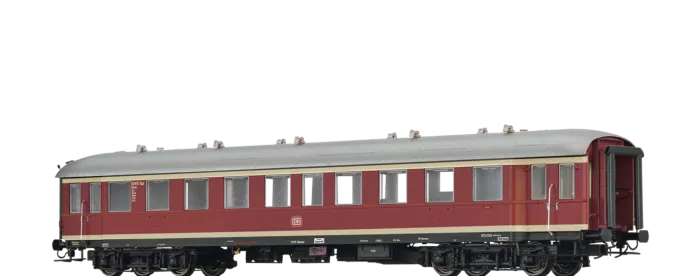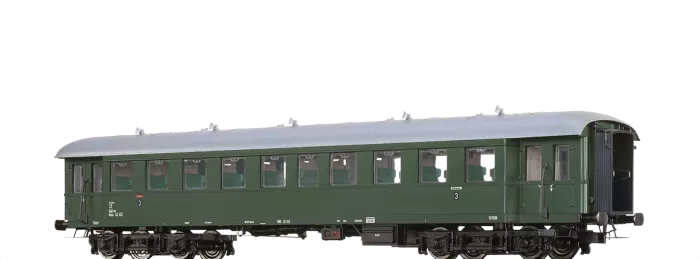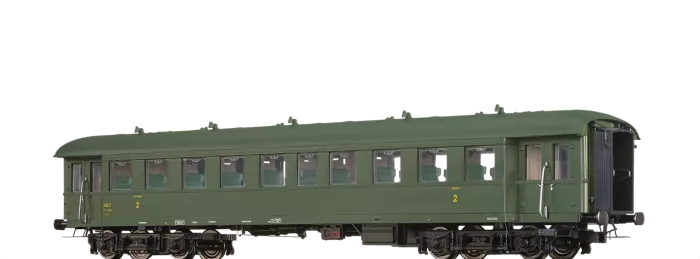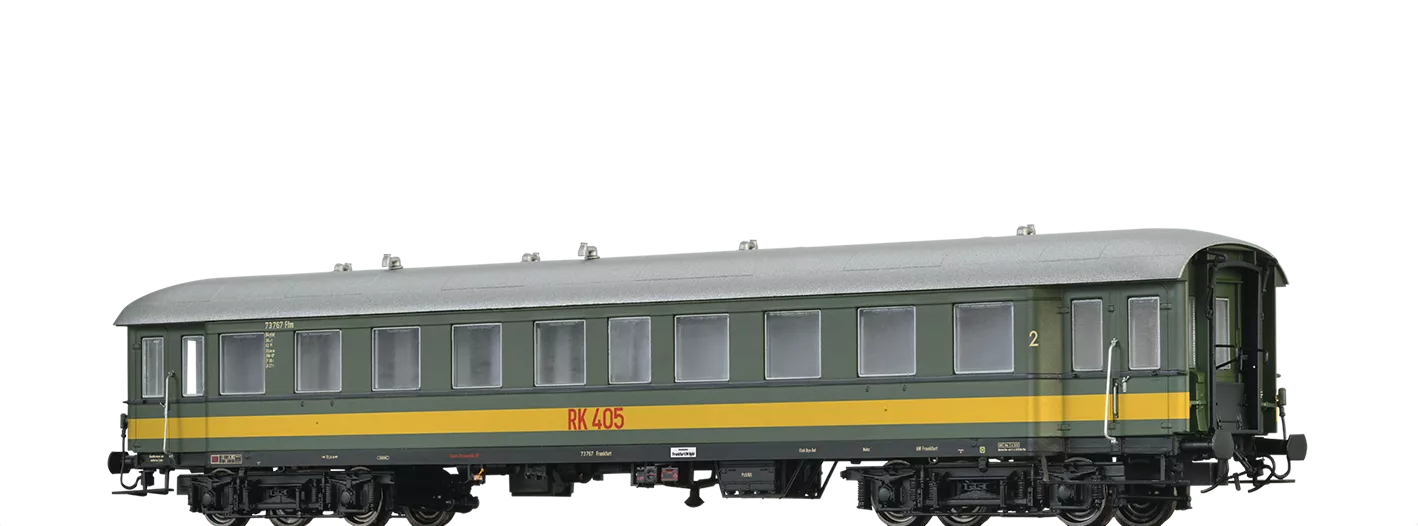
Fast Train Coach B4y(e) "Rail Kitchen" USTC
Road no.: 73 767 Ffm
Model details
- True-to-epoch construction types
- Precise replica of the Görlitz III bogies with quadruple spring system
- Precise replica of the frame with many extra mounted parts
- Prepared for interior lighting
- Multipart interior fittings in multicolour painting
- Individual seats
- Short coupling kinematics
- Three-point support
- Wheetsets in toe bearing
- Replica of the rivets on the roof
- In-plane assembled windows
- Metal wheels
- Precise replica of the brake unit
- True-to-scale windows
Downloads
Info about the original
In the mid-20s, DRG began significantly upgrading travel comfort in its Order no. express and passenger train networks. Apart from the newly-acquired two-axle models, it started to use above all four-axle compartment waggons on long-distance lines (e.g. Munich – Berlin express trains). From 1928, the company tried out several four-axle corridor carriages with open transitions for future use in this kind of transport. These test waggons proved a success, and from 1930 the company purchased more than 1,000 B, BC and C4i models in riveted design. Characteristic for these waggons was that the B part always had single-wing doors, while the C part featured double doors. Then, when advances in welding technology could also be applied in wagon building, it was time to upgrade the old construction type. Therefore, in 1935 three BC and three C test waggons were bought, which led to mass production of these types in almost unchanged design. Despite the weight savings, the welded waggons offered fewer seats than their riveted predecessors because DRG designed the passenger compartments more spaciously. Included here were for instance larger windows with 150-mm lower sills, which offered above all the youngest travellers a better view of railway operations not yet dominated by sound protection walls. In six years, more than 1,000 welded C and 145 BC waggons were built before further advances in the form of skirted passenger waggons made more improvements possible. The war scattered express train waggons across half of Europe, with larger stocks outside German railway operators, for instance at ÖBB, SNCF and PKP. These waggons remained invaluable in regional transport for DB and DR up to the late seventies, reaching an age of over forty years. They were also used internationally into the sixties, travelling as far as Scandinavia and the Balkans. There were many conversions, for instance into sleeping, buffet and semi-luggage carriages. On the occasion of the anniversary in 1985, DB put together an entire train from several different types of express wagon. Unfortunately, these waggons are today spread over several locations and hardly any are operable.


